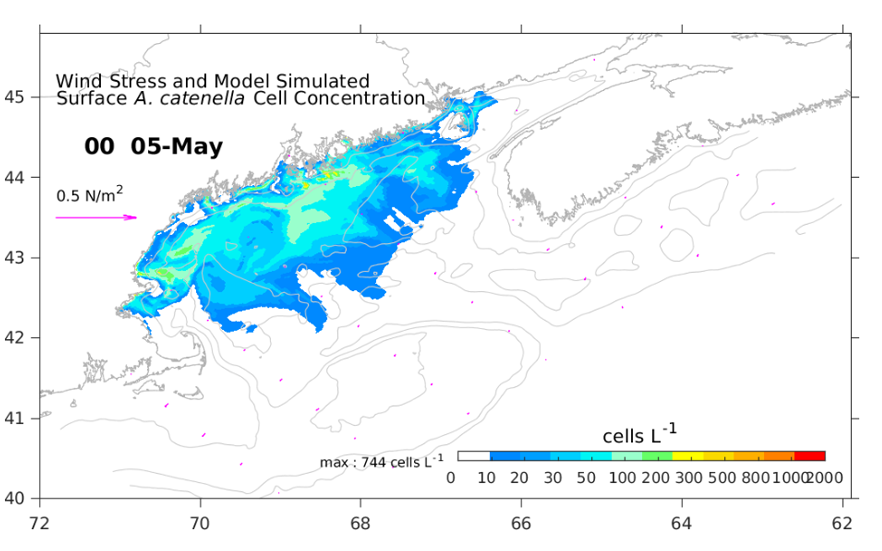Forecasting HABs in the Gulf of Maine
Each year, researchers at NOAA’s National Centers for Coastal Ocean Science and the Woods Hole Oceanographic Institution create an initial seasonal forecast for the Alexandrium catenella bloom in the Gulf of Maine. This forecast is developed with a combination of the prior year’s cyst density map and a range of environmental conditions from preceding years. Studies show that the abundance of A. catenella resting cysts is a first-order predictor of the magnitude of the bloom in the upcoming year. Environmental conditions, including light, temperature, salinity, and nutrient concentrations, influence the intensity and duration of the bloom. Researchers analyze these metrics for the bloom season of previous years and are able to project a range of environmental parameters for the upcoming year. The bloom forecast is made by overlaying this environmental forecast on the cyst map. The 2024 seasonal forecast, as well as links to forecasts from past years, can be found here. The 2025 will be linked here when it becomes available.
Predictive Models

NCOOS provides an accessible experimental model of the Gulf of Maine Alexandrium catenella bloom, including an animation showing surface wind fields and real-time bloom conditions.
The models can be found here.

NCOOS hosts the weekly update to the real-time model for the Alexandrium catenella bloom in the Gulf of Maine. When available, the dashboard contains forecast of wind, modeled cell concentration, estimated cell concentration estimated from real-time ESPs, and observed shellfish toxicity.
Links to the 2025 pdf downloads will be provided when they become available.
